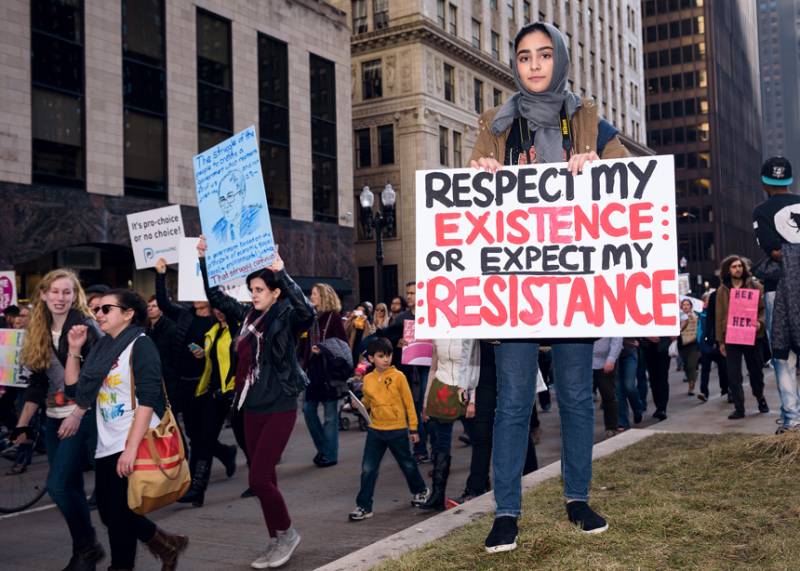FriedrichHölderlin, a German poet, aptly quoted that “where there is a danger, there also grows a saving power”. Unfortunately, the perils women are faced with in our patriarchal society couldn’t have been countered with a subtle resolve. A recent survey conducted by Thomson Reuters Foundation has identified Pakistan as the sixth most dangerous country for women. Though steps are being taken to bring human rights enforcement mechanism in line with international standards and that’s why Pakistan has moved from fourth to sixth in the list of most dangerous countries for women. However, we are miles away from the silver lining as of yet.
Law and social norms are two main sources that influence and shape up our behaviors. Law directs behavior under the threat of government sanctions whereas the social norms constrain behavior through the enforcement of community. In Pakistan, only mandates – that too limited – have been employed to ensure the prevalence of equality standards, whereas the social norms couldn’t have been evolved to address the discrimination challenges the way they have caught pace in the developed countries.
When it comes to human rights enforcement in the developing countries, there is a vigorous disagreement about the nature of certain rights as in whether they are universal or culturally relative. This becomes more controversial when they are specifically in relation to females. A country where laws validating death penalty cannot be brought into mainstream discourse for their termination, asking for a clear legislative framework to penalize marital rape is clearly out of question.
The tone of aggression in the messages depicted on the placards – during women’s march – was merely the reflection of weaknesses our system has when it comes to striking a balance in the society with regards to the equality standards. Secondly, critics argue that sense of realization those women have tend to create was to divert the mindset of women from fight for rights to being hostile and rebellious towards cultural and religious norms. However, the posters they were holding clearly delineated the idea about their vulnerability. The opposition mode they went into was reflecting the lack of mandate they had to secure the effective enforcement of their rights at all levels. Especially when they are contributing way more than what is due on their part.
It is true that that march lacked the representation of all the classes and there is a range of different pathologies – which many participants of the march don’t face – arising out of overall inequality prevalent in our society since ages. On the other hand, many women, in different remote areas, cannot consider leaving home until dead, let alone participate in the march with the flamboyant placards.
However, their eyes do look upon the women who have liberated themselves to appear on streets and roads to fight for females’ rights even when they belong to different socioeconomic class. In situation where human rights are already controversial, some women’s engagement in the rights talk coupled with slight aggression can add insult to the injury and widen the division even among the women. Unfortunately, women's march - arranged to create awareness among women about their rights - exacerbated the already existing polarization in the society. But what was missing? How come women who suffer from the gruesome violation of their rights in a patriarchal society could effectively raise voices for their concerns without widening the already existing divide? Put simply, what's the best way forward for redressing women’s grievances without getting politicized?
There exists an urgent requirement of bringing a paradigm shift from focus on rights to emphasis on women's welfare. The human rights approach should be replaced or supplemented with welfarist approach. There are couple of reasons for this. First, justification for many human rights yields a lot of practical difficulties: which set of rights should be prioritized; how resources should be allocated to prevent the violation of different rights and how respect should be given to cultural variation. Secondly, aid to the victims of a natural disaster has remained uncontroversial and commonplace. However, few step out to help someone being denied her/his rights. This is because welfarist approach does not usually get disputed the way human rights approach does.
Finally, even if the welfarist alternative fails to unite people, it can, however, prevent the disparity to grow further. Also, it can evolve social norms that will ultimately constrain our behavior thought the enforcement of community.There can be an objection to this alternative that influences based on rights have stronger encouraging force than arguments based on welfare. It is comparatively easier for a woman to complain that her right has been violated than to argue the same about her well-being. However, the strength of this objection depends on right actually either having intrinsic deontological value or promoting well-being in a rule-utilitarian sense. Otherwise, rights talk just becomes a source of misunderstanding which paves the way for snowballing the polarization in the society.






